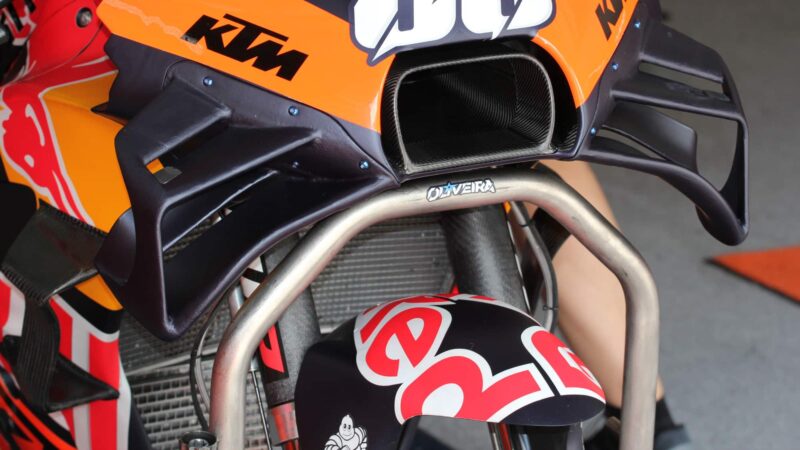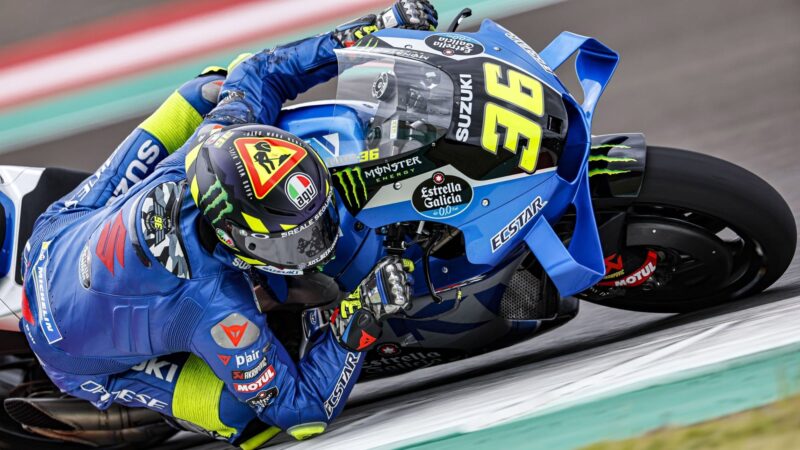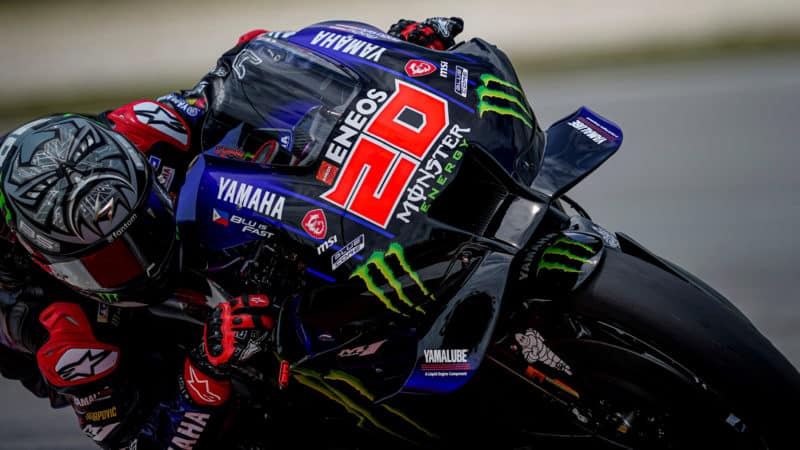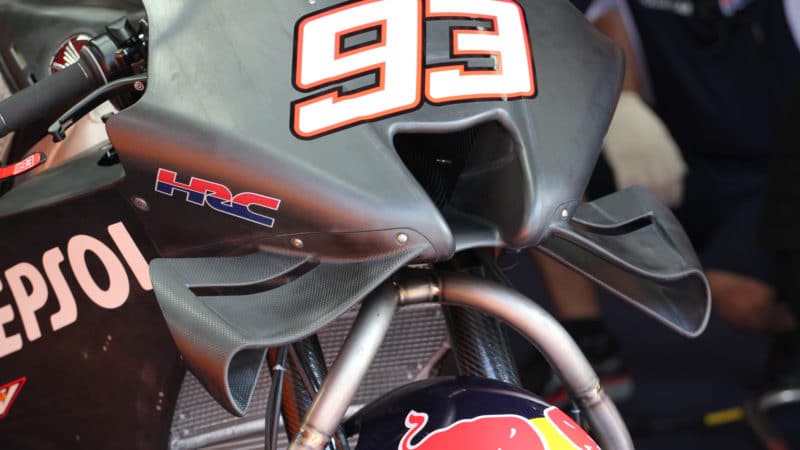Therefore machines with good downforce aero help riders go faster into corners, through corners and out of corners. So, might the new aero used by the V4s reduce the cornering advantages always enjoyed by the sweeter-handling inline-fours?
For all these reasons big aero is the big deal of 2022, because how can you ignore technology that will make you faster pretty much all the way around the racetrack?
Aprilia was the first factory to follow Ducati’s big-aero lead, adding a huge front wing to its RS-GP for 2021. This year Honda has finally got serious, fitting beautifully sculpted wings to its RC213V, much bigger than anything it’s used before, plus sidepods. At the same time KTM has fitted larger two-step top wings and sidepods to its RC16.

KTM RC16’s double two-step wings and sidepods, plus extra air intake around the airbox intake, which decreases drag by reducing the pressure difference between the front and rear of the screen
KTM
Yamaha briefly tried its bigger wing and sidepods in the two-day Sepang test, but Quartararo wasn’t impressed.
“The idea is to have less wheelie, which we have, but we lose top speed because the straights here are really long,” said Quartararo. “So we win a little on acceleration but then we lose it on top speed.”
Quartararo already has the slowest bike on the grid, so less top speed is exactly what he doesn’t need, because as soon as he gets into a battle with faster motorcycles he struggles to find the room to use the YZR-M1’s excellent corner speed.
“Maybe we can try this kind of aero at Jerez, where we don’t have big straights and where it would be very important,” added Quartararo, who used Yamaha’s big aero much more at Mandalika, which features only one straight, the start/finish, which is only 0.3 miles/500m long.
But switching aero from one track to another isn’t ideal, because changing downforce requires big changes to front suspension set-up. Again, this is exactly what riders don’t want because they’ll have to adapt to a different feeling from the front end.

Suzuki’s minimal wings have grown fractionally for 2022, but the GSX-RR still runs much less downforce aero than any of its V4 rivals
Suzuki
Ducati’s Desmosedici has long had the most powerful engine on the grid, currently at around 300 horsepower. This is what allows the Bologna factory to run more aero than anyone – big upper wings and sidepods and most recently diffusers (which must create A LOT of drag) – and still win the top-speed race. At Sepang, four of the six fastest bikes were Ducatis and at Mandalika the five fastest bikes were all Desmosedicis.
Honda worked particularly hard on its engine during the winter, specifically to allow the RC213V to run more downforce aero without losing top speed.
“Last year we couldn’t use so much downforce, because we didn’t have enough power, but now we have more power,” said Repsol Honda’s Pol Espargaró at Sepang. “So we have changed the wings for this year for more downforce but still the acceleration is beautiful, so everything feels much better.”
Of course, it is possible to go too far with downforce, even if you’ve got V4 power. KTM’s RC16 was often the second quickest bike through the speed traps last year, but at Sepang and Mandalika it was bettered by Suzuki’s GSX-RR, which has more speed for 2022 and still runs the least aero of all.
Therefore don’t be surprised if KTM have slightly tweaked its aero for the season-opening Qatar GP, when the first of each rider’s two annual aero options must be homologated on the eve of practice. In fact don’t be surprised if any of the factories unveil revised aero in Qatar, using what they learned from pre-season testing, because it’s vital they get their downforce aero just right.




